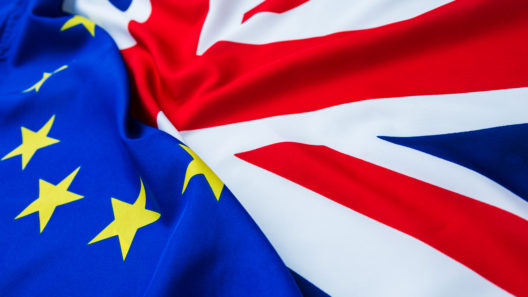Is the goal of antitrust enforcement a competitive digital economy or a different digital ecosystem?
Antitrust ferment and opportunity in digital markets
27 January 2021
Reading time: 13 minutes

At a time of sharp disagreements and radical shifts in policy, an issue crystallising at the forefront of public debate yet still ambiguous in practice is antitrust (or competition), and approaches to problematic tech mergers, de-mergers and structural separation remedies (break-ups). This article takes a deep dive into the journey to this moment of antitrust ferment and opportunity.
Current questions around this possible and relatively promising moment span in a number of directions. Bringing us right up to date, doubts revolve around the Biden Administration’s evolving stance toward antitrust policy and reform, including how the US Facebook and Google lawsuits will progress and what remedies will be imposed on the companies. Biden’s appointment of Rebecca Kelly Slaughter as acting chairwoman of the Federal Trade Commission positions the Washington watchdog agency to take on a role that is less friendly to big tech interests.
The early 2020s will likely be remembered as a moment of turbulence in antitrust enforcement. After a long period of antitrust dormancy, the United States is now entering its competition spring: new lawsuits are being initiated against Google and Facebook in the United States, new theories of harm are being proposed, and antitrust reforms will likely be part of the Biden administration’s agenda.
In Europe, Margrethe Vestager’s strong enforcement efforts in this space since 2014 have shed important light on EU competition law’s structural weaknesses. Many of these limits could be remedied through the bold new enforcement apparatus proposed under the Digital Markets Act (DMA), legislation that will give the EU Commission new investigatory and remedial powers specific to reining in tech giants’ behaviour.
While antitrust enforcement in tech markets is changing on both sides of the Atlantic, it remains piecemeal and inconsistent. The winds are changing, but their precise direction is uncertain.
Early US antitrust
Antitrust law emerged in the USA as an apparatus for tackling abuses of market power and anticompetitive commercial conduct in the 1890s, a period marked by the advent of railroads, electricity and the Second Industrial Revolution. The Sherman Act, which came into force in 1890, prohibited multilateral agreements and unilateral monopolisation, but did little to prevent mergers: ‘from 1895 to 1904, at least 2274 manufacturing firms merged, leaving behind 157 corporations, most of which dominated their industries.’1
After 1904,2 the US approach to antitrust changed radically: Theodore Roosevelt and Woodrow Wilson’s presidencies fostered a new approach to business regulation and the democratisation of markets. In the landmark case of Standard Oil in 1911, the US Supreme Court declared that the Rockefeller-owned oil monopoly was unlawful and ordered its break-up into 34 segments.
An era of ‘regulated competition’ began, under the influence of Louis Brandeis, President Wilson’s economic adviser. The Clayton and Federal Trade Commission Acts in 1914 respectively added mergers and acquisitions to the list of anticompetitive behaviour and established the Federal Trade Commission, the US trade and competition agency. During the New Deal, competition enforcement went hand in hand with the development of public utilities, public corporations and trade regulation. Strong antitrust enforcement continued after the Second World War with some important cases and the passing of the Hart-Scott-Rodino Act in 1976, which required prior notification for large mergers and acquisitions.
The origins of EU competition law
It is in the post-1945 context that EU competition law, a more recent institution, was born. A harmonised EU framework for competition was introduced in part as a condition for Americans’ withdrawal from Germany after the Second World War, heavily influenced by American law.3
The history of EU competition law is not just that of a linear growth from US roots. Its origins can be traced in a variety of national competition legal frameworks, including the German Ordoliberal tradition and the French administrative law approach.4 From its origins, competition law has been a foundational element of European Union law, and a major catalyser of integration between national commercial legal frameworks to this date.
The legal foundations of EU competition law in the 1957 Treaty of Rome remain unchanged in Articles 101 to 106 of the Treaty on the Functioning of the European Union (TFEU). Article 101 TFEU prohibits multi-lateral agreements and conduct and Article 102 TFEU prohibits abuses of dominance. The treaties provide the European Commission and Member State competition authorities with the power to investigate and punish anticompetitive behaviour in cross-border trade across Member States with the broad aim to protect the process of competition from restraint and distortion.
EU competition law is structured primarily around two areas, each with dedicated rules and procedures: the investigation and administrative challenge of cartels and abuse of dominance behaviour on the one hand, and the review of mergers and acquisitions on the other.
Chicago School antitrust and beyond
Although the 1970s were a period of antitrust activism in the United States, the Chicago School ideology had also started to influence antitrust policy and to cement doubts around strong competition enforcement. The application of Chicago School ideology to antitrust was popularised by judge Robert Bork’s famous book The Antitrust Paradox, published in 1978, in which he defended a minimalist approach to antitrust. Bork saw monopolies as efficient and argued that the promotion of total welfare and productive efficiencies ought to prevail over a structural understanding of market competition.
After the break-up of the AT&T monopoly in 1982, antitrust enforcement entered a phase of lethargy, only suspended by the landmark Microsoft case in the 1990s. Until 2020, the Microsoft case has been an outlier in antitrust enforcement in the technology industry.
Only very recently, a new Progressive Neo-Brandeisian movement has emerged in the United States. It has revived antitrust enforcement activism and led to an ‘Antitrust Spring‘ in enforcement against Big Tech companies. Recent developments include a US House Report on Competition in Digital Markets, two Facebook cases (FTC and state AGs case) and two Google cases (DOJ and state AGs case). In many ways, these developments are aimed at aligning US antitrust enforcement with its more active European counterpart, including through the inclusion of an explicit prohibition on abuses of dominance.
Meanwhile, in Europe debates are moving beyond the existing antitrust regulatory apparatus characterised by agency administrative enforcement and merger notifications (which are deemed insufficient by many), and towards an ex ante approach to regulatory enforcement as well as new investigatory powers under the Digital Markets Act. A new era of antitrust enforcement therefore awaits, but its precise shape remains unclear.
From the Facebook/WhatsApp merger to a Facebook break-up?
A case study:
The case of Facebook’s acquisitions of WhatsApp and Instagram illustrates some important tensions and inconsistencies in practice between the EU and US regimes. Facebook famously acquired Instagram in 2012 and WhatsApp in 2014. The Facebook/Instagram transaction was subject to brief 2012 FTC investigation that closed with no significant conclusions. The Facebook/Whatsapp merger was approved by the European Commission in 2014 after Facebook represented that it was technically impossible to transfer user data between the two platforms. The same year, the FTC notified Facebook and WhatsApp that any transfers or combinations of data between Facebook and WhatsApp had to be approved by users’ ‘affirmative consent.’
In May 2017, the EU Commission partly revised its earlier decision on the Facebook/WhatsApp merger and fined Facebook 110 million Euro for providing misleading information about the impossibility of linking Facebook and WhatsApp data. A number of parallel national investigations by European privacy authorities led to the same conclusion: Facebook had merged Facebook data with WhatsApp data without users’ informed consent and in breach of prior statements made to regulators.
Jump forward to 2020-21: not only are Facebook’s mergers with Instagram and WhatsApp being challenged in at least two US lawsuits, but there are questions to this day regarding Facebook and WhatsApp’s data-sharing practices. Both the FTC and State Attorney Generals’ complaints against Facebook demand structural separation remedies including a ‘divestiture of assets, divestiture or reconstruction of businesses’ – namely the effective separation of Facebook’s monopoly into three distinct social media companies: Facebook, Instagram and WhatsApp.
The possibility of a Facebook break-up has raised eyebrows in the US, and not only on the right side of the political spectrum. There are also doubts regarding the complexity of administering mandated break-ups, for example. Some of these doubts are easily outweighed by other considerations: a break-up that preserved three viable business segments and restored competition would not hurt consumers; and the effective implementation of de-merger remedies would be an important message to tech companies and the public that the regulatory winds have changed.
Looking forward
The era of neoliberal expansion, one where enclosing digital users, capturing their data and killing or eating competitors was the norm, is ending. The European Digital Services Act (DSA) is further proof that the tech landscape and governance apparatuses will be changing dramatically.
However, a strong departure from a Chicago School minimalist antitrust agenda is a lot to expect from a reformist Biden government connected to the Obama era and to the enforcement errors of the past. And there is at least one other important question that complicates the overall analysis of an evolution from promising progressive roots, through a Chicago School hiatus, back to a progressive interventionist antitrust enforcement approach.
This relates to the situation in Europe: at the same time as the DMA and DSA proposals were being published, promising aggressive enforcement against tech companies with the introduction of new high fines and the possibility of structural break-up remedies for repeated violations of the Regulation, the EU Commission was preparing to clear the Google/FitBit merger after a long Phase II investigation.
Although the Commission imposed stringent conditions on the merger, including interoperability obligations and the requirement to maintain a health data silo, the decision to clear the merger was made in spite of pressures from human rights advocates and NGOs, such as Privacy International highlighting the risks it posed for privacy and democracy, and remains highly questionable. Meanwhile, on the other side of the Atlantic, US regulators are seeking to reverse analogous past errors by breaking-up Facebook.
What these questions ultimately bring to light is that the emerging new era of antitrust enforcement will not be devoid of political conflicts and uncertainty as to the shape of regulation and of digital markets. If anything, antitrust and competition lawmakers will need to be more attuned to the politics of capitalism and technology and to the way power asymmetries and structural surveillance emerge within and outside of competitive markets.
Breaking-up Facebook or Google may be a worthy first step, but the path towards a more empowering and freedom-enhancing digital economy remains long and tortuous. Some way along that path, it is possible that the goal will no longer be a more competitive digital economy, but will become an altogether different digital ecosystem.
Two approaches to antitrust enforcement and divestment remedies
An explainer:
The main difference between the US and EU systems is that in theory US antitrust law is developed by the courts, whereas EU law is developed by competition regulators and the European Commission. In practice, however, the distinction is not as sharp.
US enforcement
Most US antitrust disputes are resolved through consent decrees, agreements reached through informal out-of-court settlements. Federal US antitrust law is enforced through two agencies: the Antitrust Division of the United States Department of Justice (DOJ) and the Federal Trade Commission (FTC). The DOJ can bring lawsuits but lacks the authority to impose remedies. The FTC has a wider range of powers, including the power to institute administrative proceedings against firms that violate antitrust law. Unless settled, FTC complaints are adjudicated by US Federal administrative courts. Mergers are reviewed by either the FTC and DOJ, but give rise to reasoned public decisions only in exceptional cases.
US courts can impose a variety of remedies to address antitrust infringement, including behavioural and structural remedies. US antitrust judges, scholars and authorities have long exhibited a preference for structural or divestiture remedies such as break-ups because they are ‘simple, relatively easy to administer, and sure’. Break-up remedies were imposed in landmark cases such as Standard Oil and AT&T, but they were not successfully imposed in the Microsoft case, where authorities settled for an interoperability remedy instead. Today, break-up remedies are part of a heated political conversation, but they are hardly considered a panacea. For example, Fiona Scott-Morton has argued that a Facebook break-up is unlikely to work: ‘By the time any antitrust verdict is rendered, there will be one coherent Facebook and no divisions to divest.’
EU enforcement
Contrary to the US, in Europe break-up remedies are not part of competition authorities’ routine enforcement apparatus. Another way of putting this is that once a merger is consummated it cannot be reversed. The European enforcement approach centres around a network of competition authorities, the European Commission and national regulators, whose actions are subject to appeal to specific national or EU courts. The European Commission is the EU competition regulator, which means it generally has competence over most cross-border antitrust investigations and the largest cross-border EU mergers. All mergers that meet EU turnover thresholds give rise to a public notification process, and often to a reasoned decision by the Commission.
The types of remedies available in EU competition law proceedings differ from US remedies. In Europe, the most frequent remedy in non-merger cases is the imposition of administrative fines. Aside from fines, and particularly in merger cases, the Commission can impose ‘any behavioural or structural remedies which are proportionate to the infringement committed and necessary to bring the infringement effectively to an end.’ The remedies imposed in the EU Google/FitBit case, which include API-based interoperability and a health data silo, are behavioural remedies that require monitoring for a duration of ten years.
Divestitures and structural remedies are less prevalent in EU competition law: they are imposed only in the absence of an equally effective (or equally burdensome) behavioural measure. The Digital Markets Act proposal reflects the same preferences: it will likely be possible to impose a break-up remedy for systematic failures to comply with the Regulation, but only in very limited circumstances. Much of the enforcement emphasis in EU law will thus remain on ex ante prevention of structurally anticompetitive behaviour rather than on ex post attempts to restructure markets.
Image credit: monsitj
- Tim Wu, T., (2018) The Curse of Bigness. Chapter 1, page 12.
- In 1904, in the case of Northern Securities Co. v. United States, 193 U.S. 197 (1904), the United States Supreme Court declared that the merger between Northern Pacific Railway, Union Pacific Railroad and the Southern Pacific Railroad into the holding company Northern Securities was illegal. (Link: https://en.wikipedia.org/wiki/Northern_Securities_Co._v._United_States.)
- See Maher, I. (2000) Re-Imagining the Story of European Competition Law. Oxford Journal of Legal Studies. 20 (1) pp. 155-166
- Id. supra (Maher), and more generally see Gerber, D. J. (1998) Law and competition in twentieth century Europe: Protecting Prometheus.
Related content

Post-Brexit Britain’s dance-off with EU privacy standards in the context of EU-US relations
When privacy protections are aligning at a global level, how will the UK reconcile data protection and digital protectionism?

Reinventing online platforms: is the new EU regulatory package enough?
Without mandatory interoperability, will the Digital Markets Act and Digital Service Act be enough to reset the rules for big tech?

The EU Data Strategy: three key questions
In this long read, we highlight three issues that arise out of the European Commission’s data strategy.

Should more public trust in data-driven systems be the goal?
To better understand the limits of public trust in data-driven systems, we must acknowledge the role structural inequalities play in shaping trust